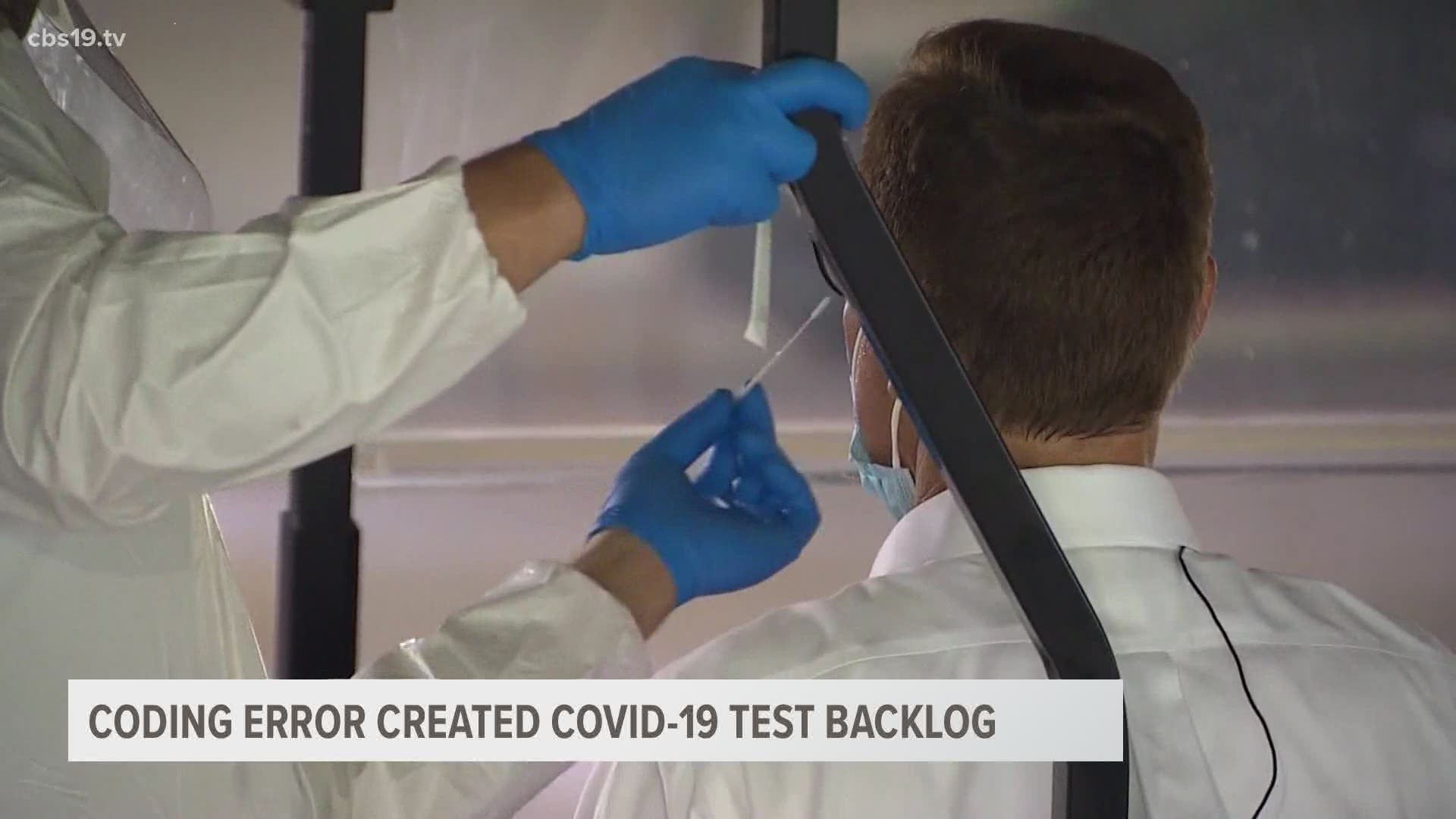TYLER, Texas — COVID-19 testing is guiding most of the decisions about how to reopen the state, but inconsistencies with those numbers make it hard to get a clear understanding of how the spread of the virus is getting faster or slower.
The Texas Department of State Health Services (DSHS) acknowledged Monday that a large testing backlog had skewed some of the numbers it presented over the last couple months.
According to a spokesperson, DSHS’s test recording software was only designed to account for positive results until COVID-19, when the state decided to track both cases and tests, as most other governments did.
The expansion of COVID-19 testing from March through the summer put a strain on the software, so after weeks of planning, DSHS upgraded the system on August 1. In doing so, it discovered about 350,000 tests that had not been included in the totals released to the public.
The backlog represents about 7.9% of all tests administered during the pandemic.
The DSHS spokesperson says there are several ways in which testing data is submitted to the state, including by fax. Some major health care providers, including Walgreen’s and CHRISTUS Health, submitted digitally in multiple streams. As the old software reached its limits, some of those streams would receive coding errors and not be counted.
The result was that many positive and negative tests were never recorded.
The DSHS spokesperson says many of the tests in the backlog have now been entered, but some remain in the backlog. Adding all those new-found results into the state database has changed the numbers in a way that may have influenced some decision-makers.
Gov. Greg Abbott and other state and local leaders have cited the positivity rate as one of the key indicators they use when deciding what is safe. Gov. Abbott closed down bars when the positivity rate crossed above 10%, and said last week that he wants to see it fall and remain below 10% before allowing them to open again.
Texas calculates the positivity rate based on the percentage of all tests in the previous seven days that came back positive. A large single-day fluctuation in the number of tests or number of positive results can substantially swing the positivity rate up or down. For example, on July 31, the positivity rate was 12.1%. However, August 11, it had spiked to 24.5%. As DSHS cleared the testing backlog, the positivity rate dropped below 12%.
DSHS posted a disclaimer on its dashboard Monday afternoon, which added that the backlog did not affect whether people received their own test results, since that information came directly from the provider on an individual basis.
The DSHS spokesperson mentioned that providers must send positive test results to the public health agency over the county in which the test occurred, and the public health agency then submits that information to DSHS. Now those agencies must cross-reference their previous records with the new testing information that comes out of the backlog to see if any were already included. Dallas County on Sunday submitted more than 4,000 new positive tests that had been administered in July but not counted as they got trapped in the backlog.
The DSHS spokesperson added that there may be more days with abnormal data as the state finishes clearing the testing backlog.

